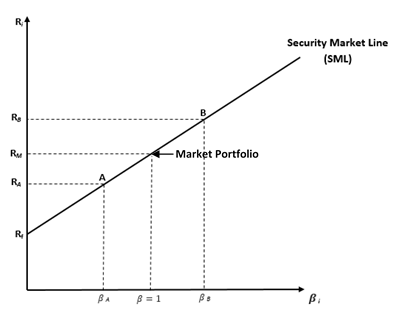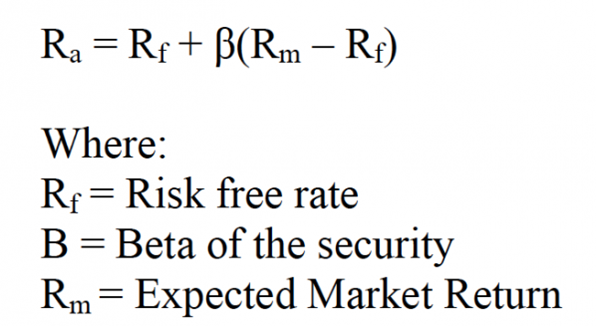Reading: Capital Asset Pricing Model
Capital
Asset Pricing Model (CAPM)
•Expected
Return on the Market - The expected market return is an important concept in
risk management, because it is used to determine the market risk premium. The
market risk premium, in turn, is part of the capital asset pricing model,
(CAPM) formula. This formula is used by investors, brokers and financial
managers to estimate the reasonable expected rate of return on a given
investment.
•Expected
Return on an Individual Security – process similar to expected market
return, only difference is that it is finding an asset price for a single
security.
Expected
Return on the Market

If the risk-free rate, estimated by the current yield on a one-year Treasury bill,
is 4.96 percent, and the risk premium is
1.39 percent the expected on the market
is:
Expected
Return on an Individual Security

•The
Security Market Line (SML) is the graphical depiction of the capital asset
pricing model (CAPM)
•The
expected return on a security with a beta of 0 is equal to the risk-free rate.
•The
expected return on a security with a beta of 1 is equal to the expected return
on the market.
Expected
Return on an Individual Security

This is the Capital Asset Pricing Model (CAPM)
CAPM
Example
•The
shares of Aardvark Enterprises have a beta of 0.7. The risk-free rate is
assumed 3%, and the difference between expected return on the market and the
risk-free rate is assumed to be 8.0%. What are the expected return on the two
securities?
•
Aardvark expected return:
15.0% = 3% + 1.5 x 8.0%
Zebra expected return:
8.6% = 3% + 0.7 x 8.0%
Última modificación: martes, 14 de agosto de 2018, 08:45
